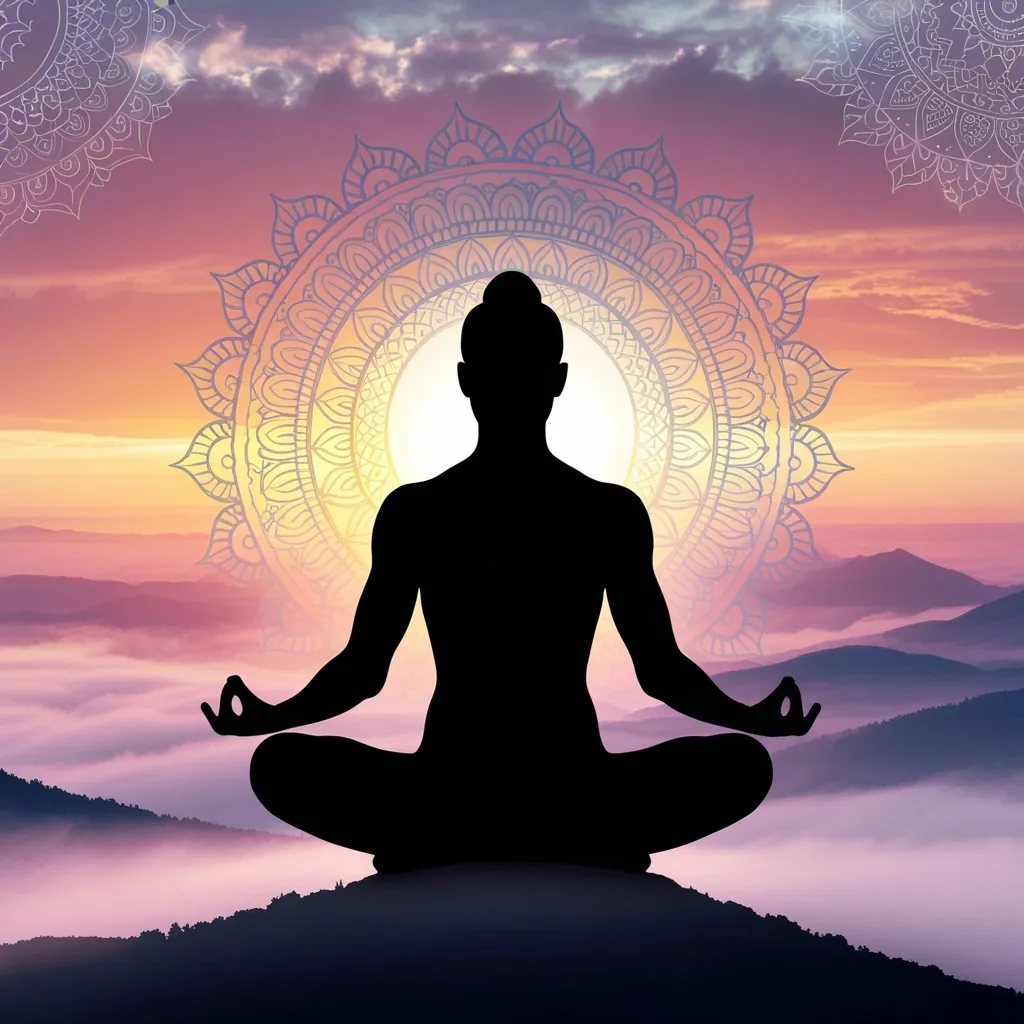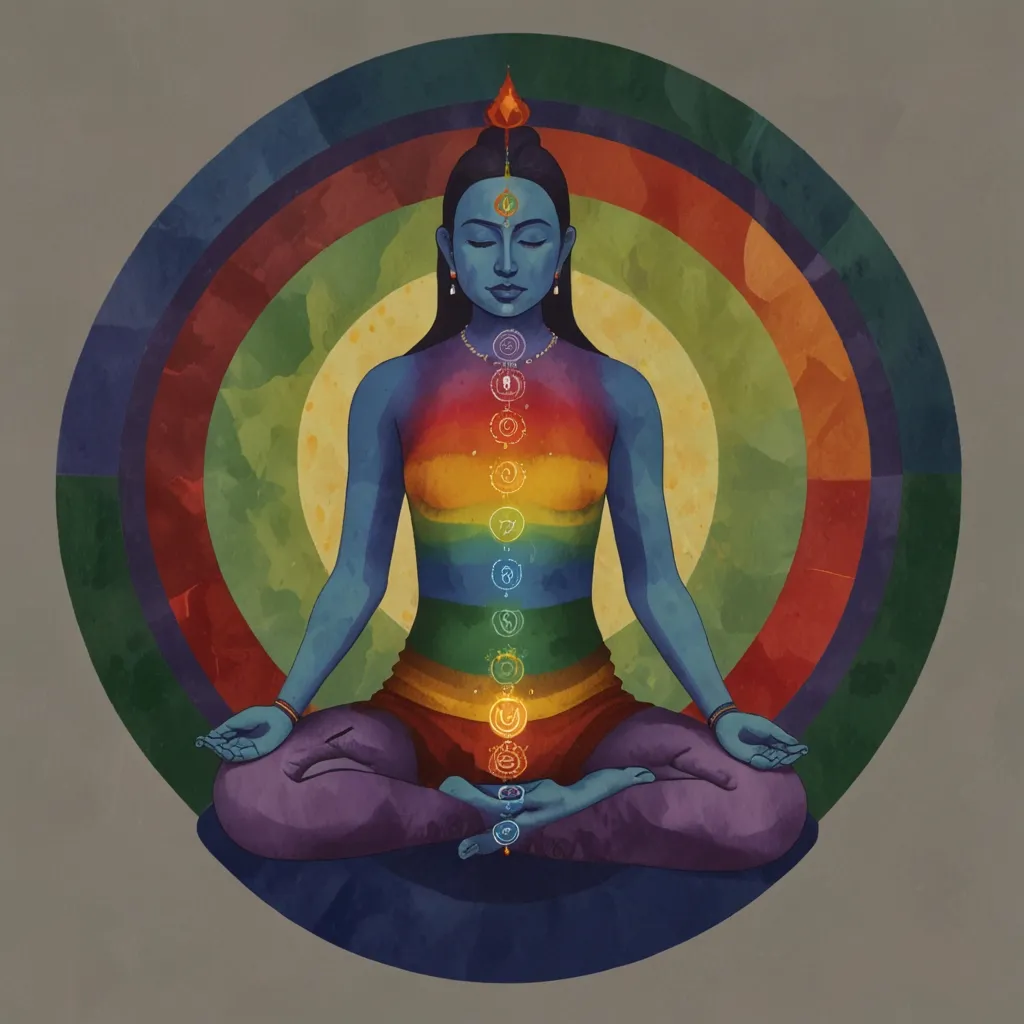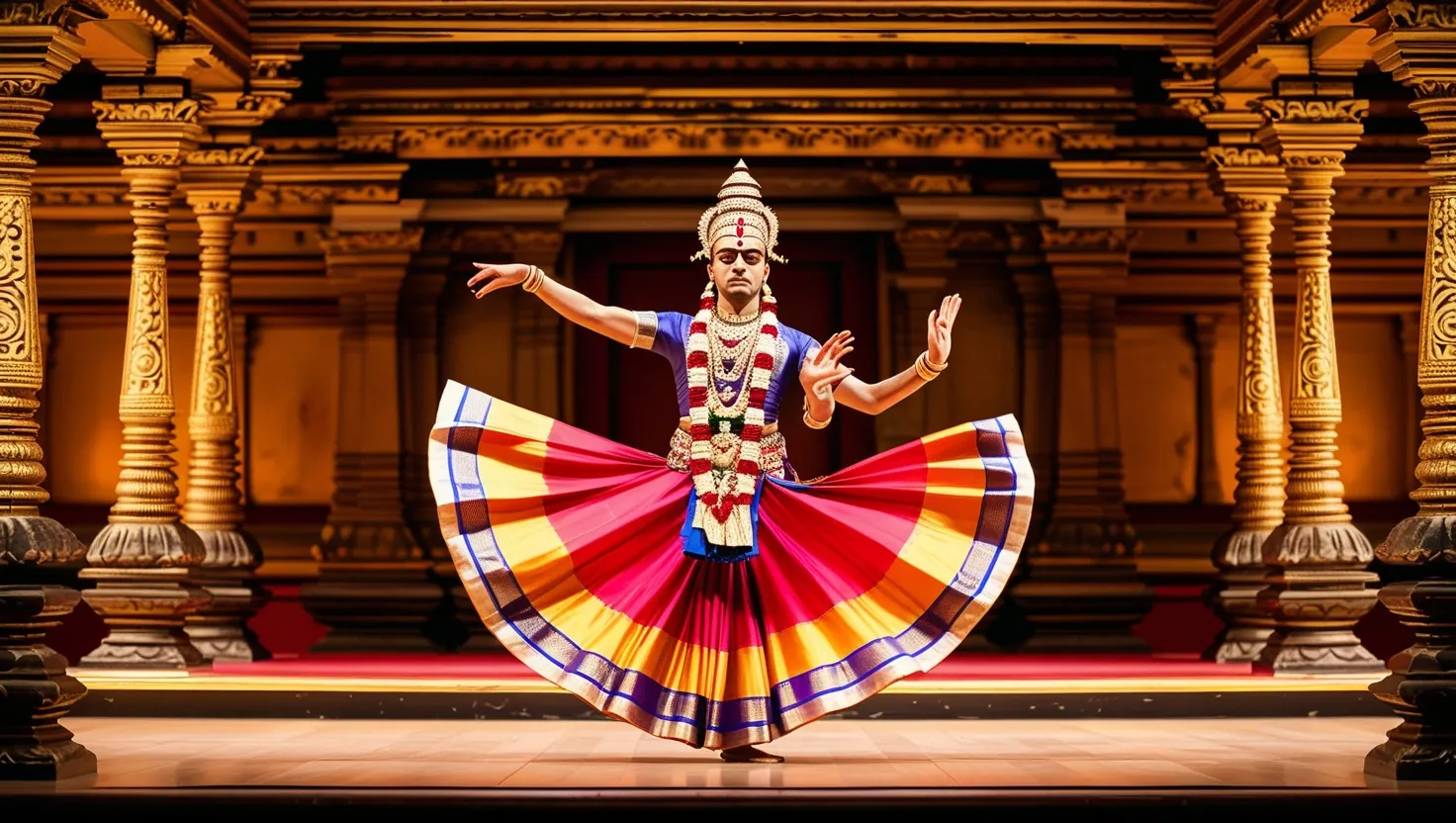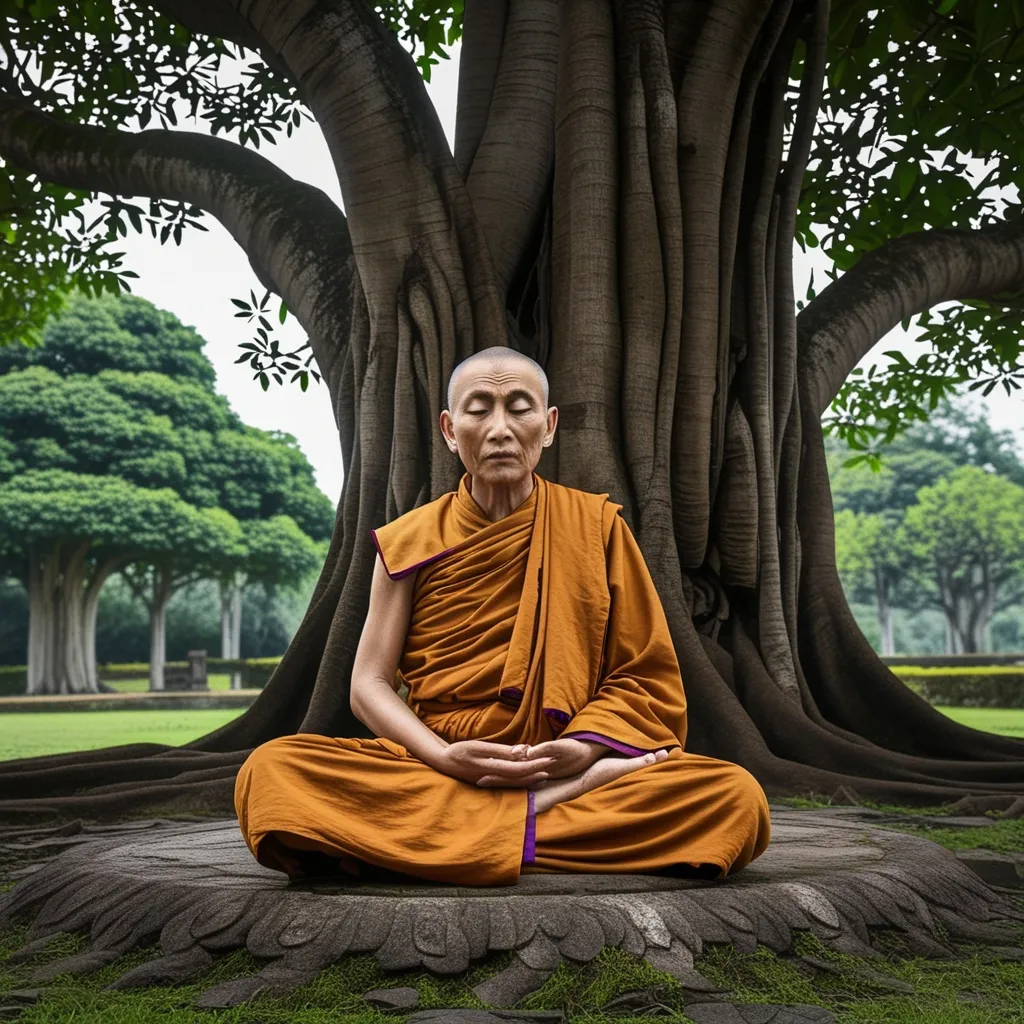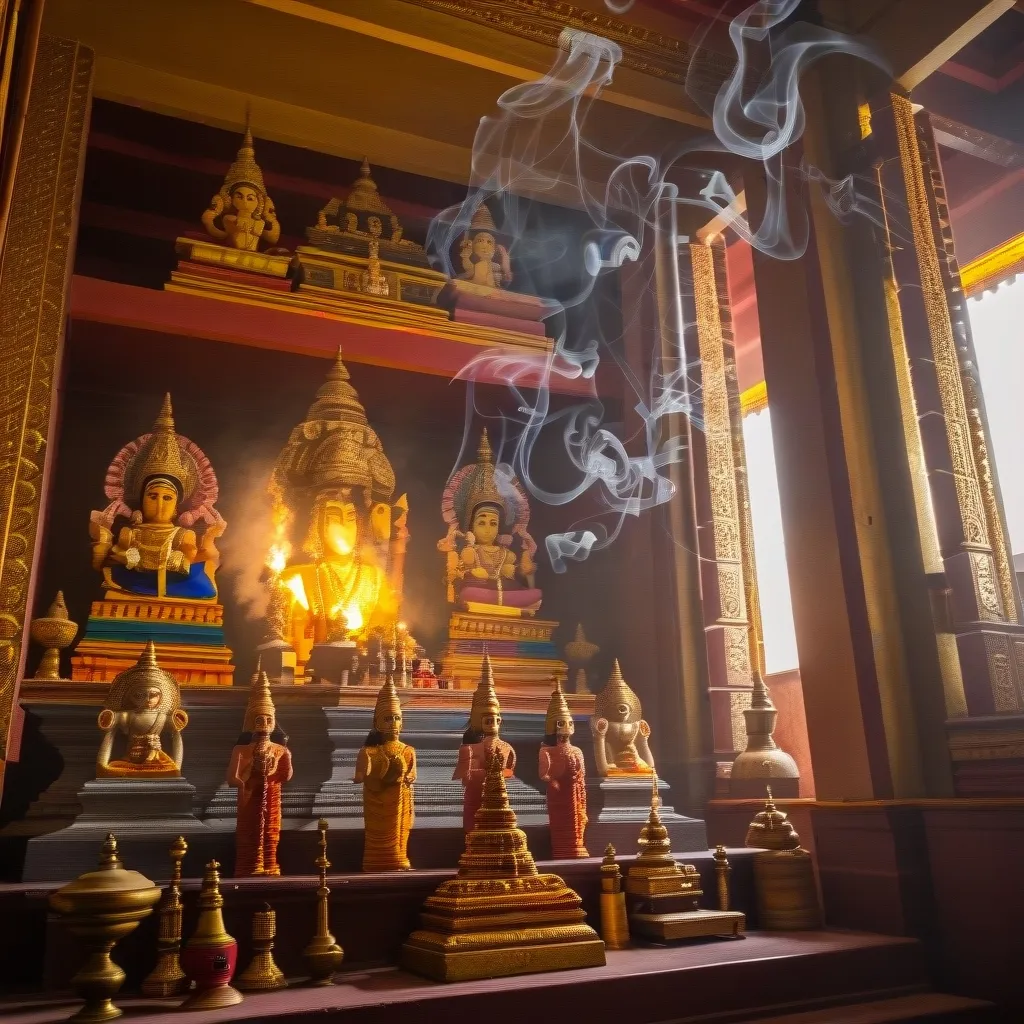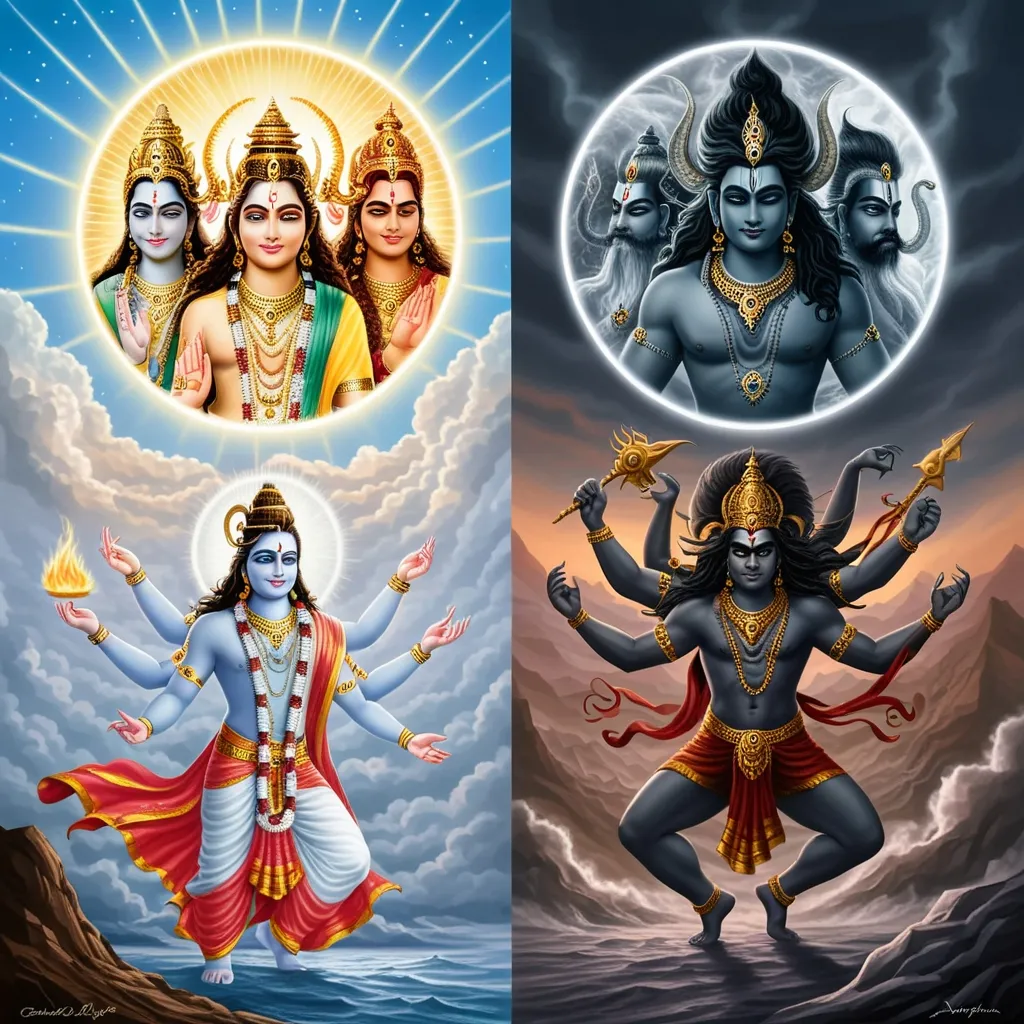Yoga: A Journey from Ancient Hinduism to Modern Wellness
Yoga has become a global phenomenon, captivating millions with its promise of physical and mental well-being. But beneath the surface of trendy studios and colorful mats lies a rich tapestry of spiritual wisdom, deeply rooted in the ancient traditions of Hinduism.
The story of yoga begins in the misty depths of history, with whispers of its existence echoing in the Rig Veda, the oldest of the Hindu sacred texts. Composed over 3,000 years ago, this ancient scripture first mentions the word “yoga,” derived from a Sanskrit root meaning “to join” or “to unite.” It’s a simple word that holds the essence of yoga’s profound purpose – to unite the individual self with the divine.
But yoga didn’t spring fully formed from the pages of the Vedas. It was the Rishis, those legendary sages of ancient India, who breathed life into the practice. These wise men, through deep meditation and spiritual insight, received and refined the knowledge of yoga. They passed it down through generations in the Upanishads, a collection of over 200 scriptures that serve as a spiritual roadmap for seekers of truth.
Imagine sitting at the feet of these ancient masters, soaking in their wisdom as they reveal the secrets of the universe and the human soul. This was the guru-disciple tradition, a sacred relationship that ensured the purity and integrity of yogic teachings throughout the centuries.
In Hindu mythology, the origins of yoga are even more divine. It’s said that Shiva, the god of destruction and regeneration, gifted this knowledge to humanity. Picture the cosmic dance of Shiva, destroying ignorance and ego, while simultaneously revealing the path to inner transformation through yoga.
As yoga evolved, it branched into different paths, each offering a unique approach to spiritual growth. The Bhagavad Gita, that jewel of Hindu philosophy, beautifully outlines three main yogic paths: karma yoga (the path of selfless action), raja yoga (the path of meditation), and bhakti yoga (the path of devotion). These aren’t rigid categories but flowing streams, all leading to the same ocean of self-realization.
At its heart, yoga is about much more than touching your toes or mastering complex poses. It’s a spiritual journey, a way to purify body and mind, preparing them to recognize the true self within. It’s about peeling away layers of ego and desire, sacrificing the small self to discover the vastness of our inner being.
This spiritual core is what sets traditional yoga apart from many modern interpretations. While yoga has exploded in popularity in the West, it often focuses primarily on the physical aspects – the asanas or postures. These are undoubtedly beneficial for health and well-being, but they’re just the tip of the iceberg when it comes to the full depth of yoga.
In fact, the physical postures we associate with yoga today are relatively recent developments. The ancient texts speak more of meditation, breath control, and ethical living as the primary tools of yoga. The elaborate system of asanas we see in modern yoga classes largely evolved much later, particularly in medieval Hatha Yoga and Tantra traditions.
This doesn’t mean that modern yoga practice is invalid – far from it. But understanding its roots can enrich our practice, adding layers of meaning and depth to every movement and breath.
Hinduism itself is a diverse tapestry of beliefs and practices, and this diversity is reflected in the various approaches to yoga within different Hindu denominations. Vaishnavism, Shaivism, Tantrism – each has its unique flavor of yoga, but all share the common goal of elevating consciousness and achieving spiritual freedom.
In traditional Hindu practice, the role of a guru is crucial. More than just a teacher, a guru is a spiritual guide, helping the student navigate the complex inner landscape of yoga. It’s a relationship based on trust, respect, and the shared goal of spiritual growth.
Along with personal guidance, Hindu yogic traditions often employ tools like mandalas – intricate geometric designs that represent the cosmos. Meditating on a mandala can help connect the practitioner with universal energies, bridging the gap between the individual and the cosmic.
Interestingly, despite its ancient Indian roots, yoga isn’t as widely practiced in modern India as one might expect. Recent surveys suggest only about a third of Indian adults engage in yoga, with many doing so only occasionally. However, there’s been a push from the Indian government to promote yoga as a cultural practice beneficial for both physical and spiritual health.
The global spread of yoga has sparked some fascinating debates. Some argue that yoga is too deeply rooted in Hindu spirituality to be practiced without acknowledging its religious context. Others from different faith backgrounds have questioned whether yoga conflicts with their own religious beliefs.
Yet many practitioners and scholars maintain that yoga, while originating in Hinduism, transcends religious boundaries. Its principles of unity, self-discovery, and inner peace are universal, applicable to people of all faiths or none.
For countless individuals around the world, yoga has become a transformative journey of self-discovery. It offers a path to reconnect with our inner selves, to find peace amidst the chaos of modern life, and to touch something greater than ourselves.
As one Hindu author beautifully expressed it, “Yoga is about relinking ourselves with the spirit that lights all of us up.” It’s a reminder that beyond the stretches and poses, yoga offers a profound invitation to explore the depths of our being.
Whether you’re a seasoned yogi or a curious beginner, understanding the rich tapestry of yoga’s Hindu roots can add new dimensions to your practice. It reminds us that with every breath and movement, we’re participating in an ancient tradition of self-discovery and spiritual growth.
So the next time you step onto your yoga mat, take a moment to connect with this lineage. Feel the wisdom of ancient sages flowing through you. Breathe in the devotion of countless seekers who have walked this path before. And remember that in your practice, you’re not just stretching your body – you’re reaching for the divine within yourself.
Yoga is a bridge between the physical and the spiritual, between the individual and the universal. It’s a testament to the enduring human quest for meaning, connection, and transcendence. Whether practiced in a traditional ashram or a modern studio, yoga continues to offer a powerful tool for inner peace, self-realization, and spiritual growth.
In embracing yoga, we honor its rich heritage while making it relevant to our modern lives. We become part of a living tradition, one that continues to evolve and inspire, linking past and present in a beautiful dance of body, mind, and spirit.
